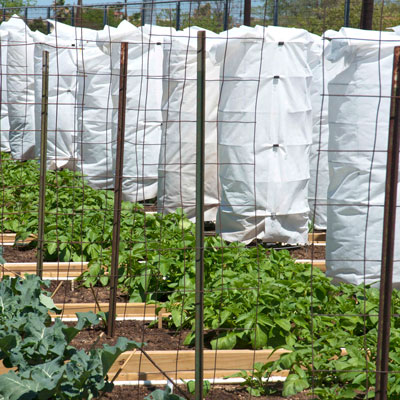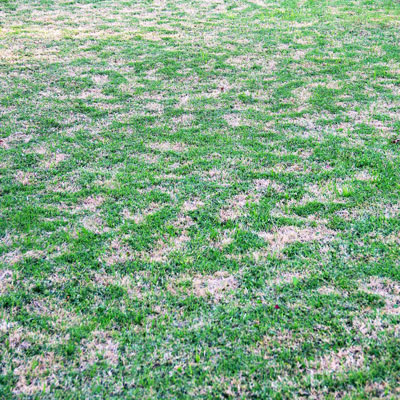Night of the First Freeze

Photo: Tomato cages wrapped in frost cloth have several degrees of extra protection from cold. Photo is from gardens of Bexar County AgriLife Extension gardens at San Antonio Botanic Garden.
Last year there were big parts of South Texas that never did have a killing freeze, and most of the state hasn’t had one yet this fall, either. But that could change as early as tomorrow morning in the Panhandle and Northwest Texas and over the weekend in much of the rest of the state. It probably won’t be a lot longer for other areas farther south.
What do you do when it looks like the growing season might come to a halt? Many times, if you can pull your plants through that first frost or light freeze, there will be several more frost-free weeks before winter arrives to stay. As late as we are, that may not be the case, but let’s plunge forward just in case.
• For a light frost: Frost forms on plants’ leaves just as it does on car windshields during clear and still cold weather. Frost can disfigure or kill plants, so take precautions even when temperatures are expected to fall only into the high 30s. Covering plants with lightweight nursery frost cloth or old sheets can gain several degrees’ worth of cold protection. Move container plants under the cover of porches or beneath eaves.
• For an actual freeze (32 F or below): Protect hardy plants (such as chrysanthemums in bloom, also leafy and root vegetables) with lightweight nursery fabric. You’ll gain several degrees of protection from those frost cloth fabrics when you use them to cover tender annuals such as tomatoes or marigolds. Freeze-sensitive annuals can be protected from hard freezes by covering with plastic suspended away from their leaves. Supply supplemental heat to keep temperatures above freezing beneath the cover. Do not allow their leaves and flowers to touch the cold plastic.

Photo: Frost patterns in bermuda are odd and puzzling.
About the photo above…
The bermudagrass lawn in my photo had been hit by a killing frost (but not a hard freeze). The unusual pattern showed up a couple of days after the frost, and it alarmed the homeowners involved. The good news always is that this is of no concern. As soon as a hard freeze hits, all of the grass will turn brown uniformly.
